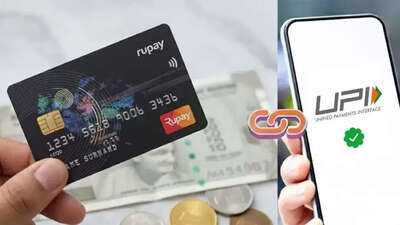The Unified Payments Interface (UPI) has revolutionized the digital payments world in India. Developed by the National Payments Corporation of India (NPCI), this system has completely transformed the way mobile payments are sent and received. It's so easy and fast that almost everyone, from vegetable vendors to large shopping malls, is using it today. Now, a new chapter has been added to this revolution: RuPay credit cards. You can now make payments by linking your RuPay credit card to UPI. But this convenience raises a significant question: Is it truly free?
₹2,000 Limit, Relief for Customers
The first and most important thing every consumer should know is the ₹2,000 limit. NPCI has made the rules very clear. If you make a payment up to ₹2,000 (two thousand rupees) through UPI using your RuPay credit card, you won't be charged any fees. It's completely free.
This rule is important because most daily UPI transactions in India, such as groceries, small bills, cab fares, or eating out, fall within this limit. This step ensures that there's no additional burden on the everyday needs of the common man. You can use your RuPay credit card on UPI for small payments without any worry. It's as free as using UPI from your bank account.
So, what's the truth about the 1.1% fee?
Now let's turn to the fee that's being discussed the most. It's true that starting April 1, 2023, NPCI has implemented a rule that charges RuPay credit card UPI payments over ₹2,000. This fee can be up to 1.1%. But there's a big catch here: this fee isn't borne by the customer.
This fee, technically known as the "Merchant Discount Rate" (MDR), is borne by the merchant or shopkeeper to whom you are making the payment. For example, if you purchase goods worth ₹25,000 from a major electronics store and pay using a RuPay credit card via UPI, the merchant will have to pay a fee of up to 1.1% of that ₹25,000 to their bank. Only ₹25,000 will be deducted from your pocket, i.e., the customer's account.
Why was this fee imposed?
The question is bound to arise: why was this fee necessary when everything was going well? The answer lies in making the digital payment ecosystem "sustainable." The entire UPI system, which operates in real-time, 24/7, is backed by a massive and expensive infrastructure. This includes servers, technology, security systems, and the involvement of multiple banks.
When you use UPI from a bank account, the cost is minimal. However, when payments are made via credit card, the credit card network (such as RuPay) and the issuing bank are also involved. This nominal fee is levied on merchants to cover the costs of this entire process and ensure that the system continues to function smoothly in the future. NPCI aims to keep this digital infrastructure robust without burdening customers.
Disclaimer: This content has been sourced and edited from TV9. While we have made modifications for clarity and presentation, the original content belongs to its respective authors and website. We do not claim ownership of the content.
You may also like

Why the sound of chewing, tapping or clicking drives you mad, according to neuroscience

From NYC To Virginia: How three Indian-origin Muslims handed Trump his biggest defeat - all you need to know

Instagram leads as top influencer for food choices among Millennials and Gen Zs

UKPNP urges all Kashmiris to stand united against occupying Pakistani forces

Trump secretary left stuttering over MRI query on Fox News: 'Not a routine procedure'







